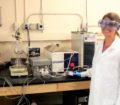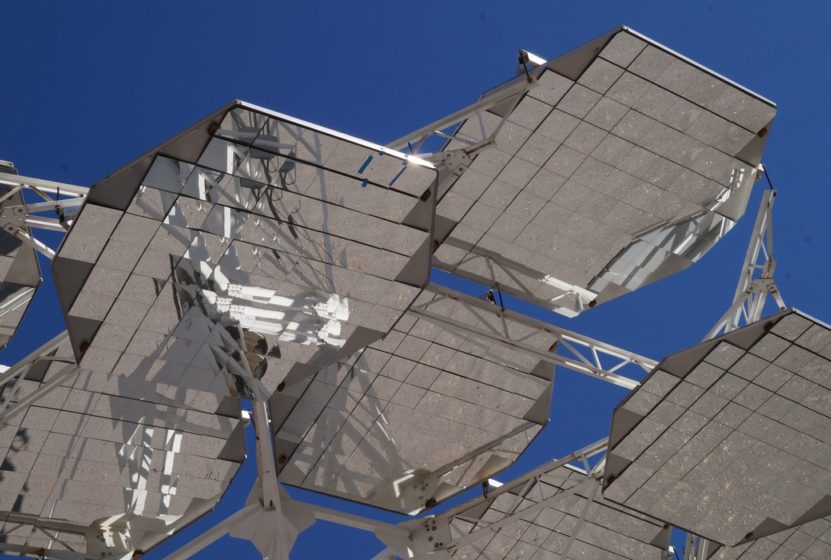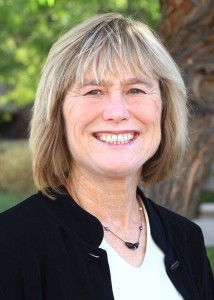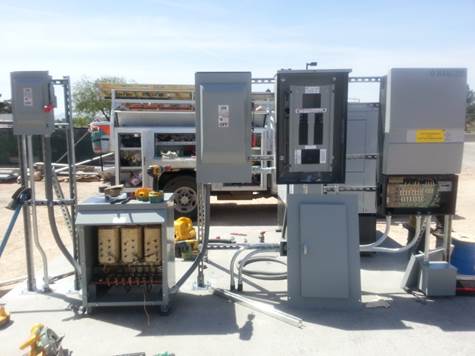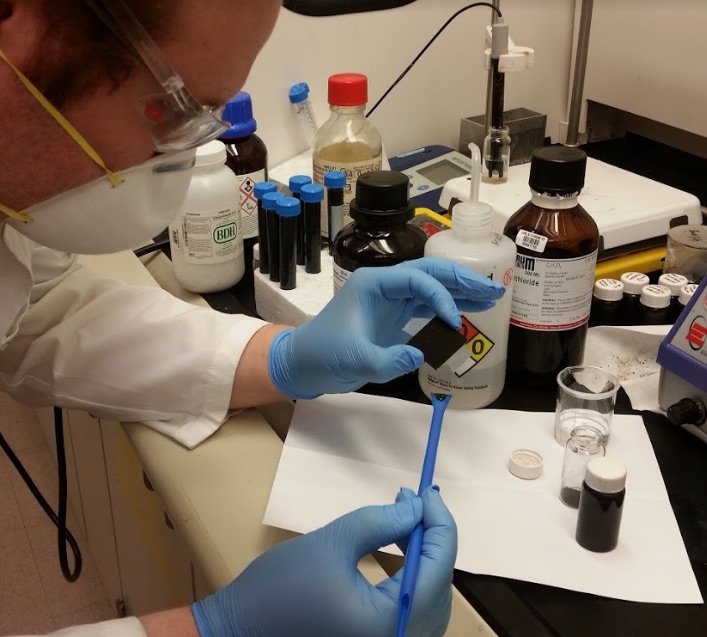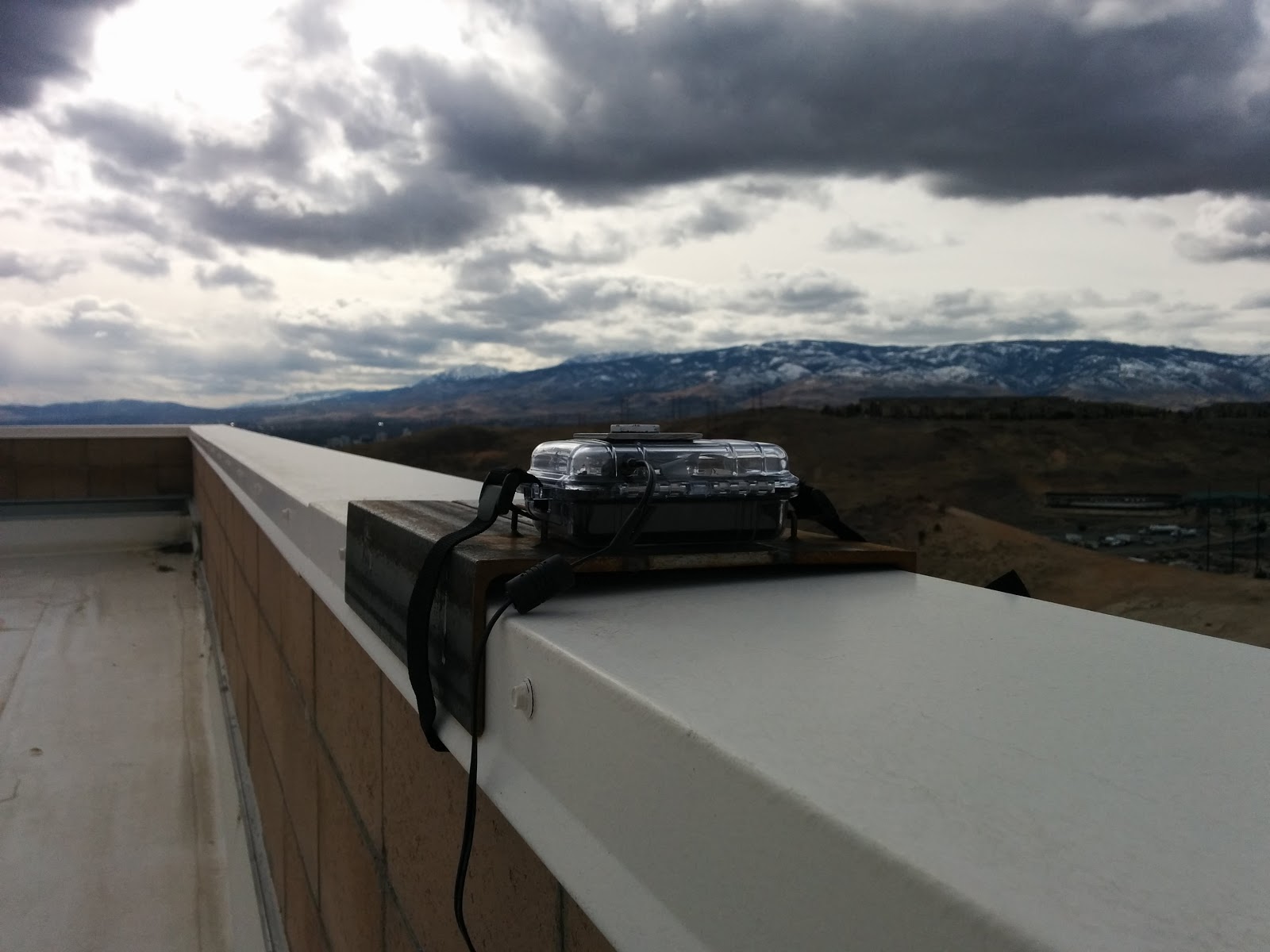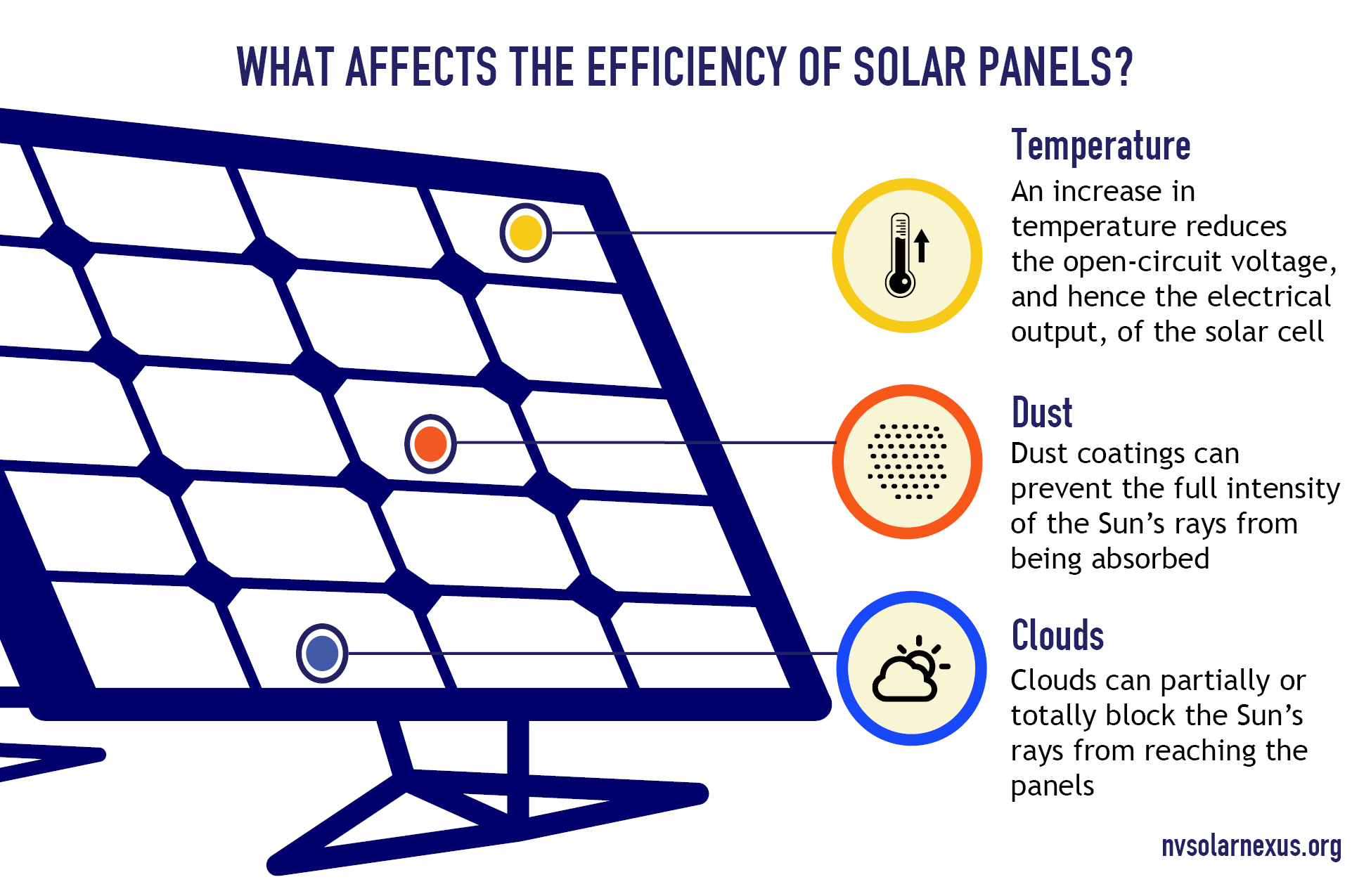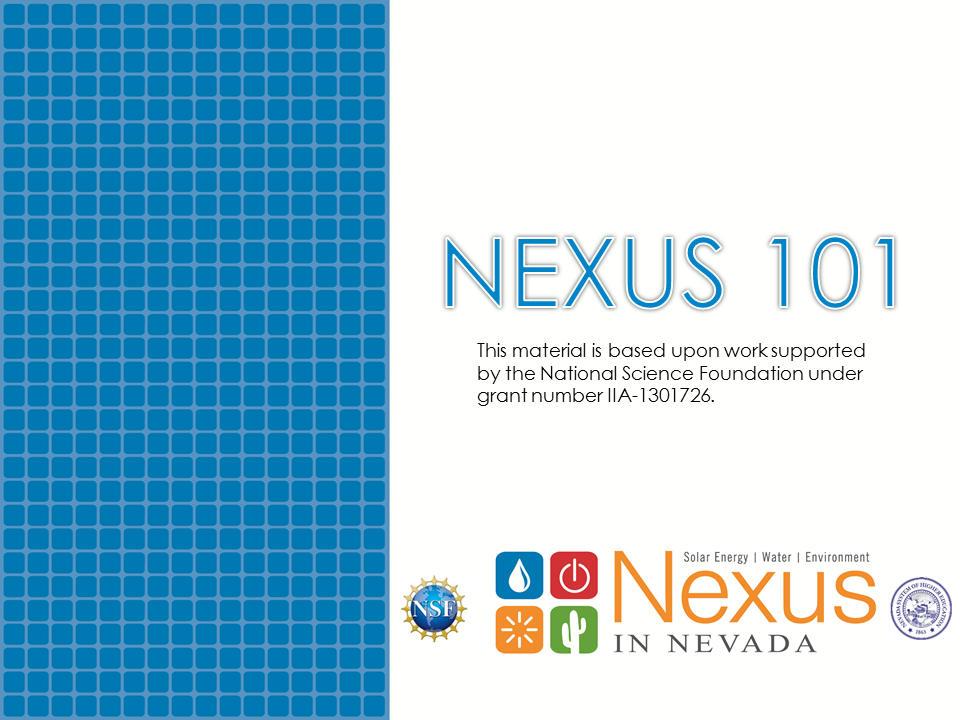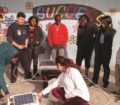Letter from the Director
Sincerely,
Dr. Gayle Dana
|
RESEARCH HIGHLIGHTS
|
Toward Advancing High Efficiency Power Cycles
Most thermal power stations use energy to heat water into steam to drive turbines, a process that produces 80 percent of the world’s electricity. NEXUS scientists Dr. Robert Boehm and Dr. Yitung Chen at the University of Nevada, Las Vegas are currently investigating replacing that steam cycle with a supercritical carbon dioxide (CO2) cycle. It’s a technique that has the potential to unlock up to 50 percent thermal efficiency using a smaller, cheaper turbine. The researchers have designed and constructed the first solar-driven supercritical CO2 cycle that will allow higher operating temperatures in the system thereby achieving greater thermal conversion efficiencies. The scientists are also developing advanced equipment concepts including heat exchangers, receivers, turbines and compressors, and working to understand how these can be combined to yield more efficient thermal performance. The engine should be operational in Fall 2016. “Ours will be the first solar driven cycle of this type,” Boehm says. “We feel the future of solar thermal power generation is in related higher temperature cycles.”
Controlling the Electric Grid of the Future
Microgrids are one of the cornerstones of the Department of Energy’s vision of the future “smart” electric power infrastructure, which will consist of independent “smart” microgrids that can provide electric power to local customers during major outages. This will facilitate the integration of solar power into the electric grid while providing a reliable energy supply. Key to the success of such smart grid technology, and the integration of solar energy, are tools to monitor and control the grids. Dr. Mehdi Etezadi-Amoli, a University of Nevada, Reno (UNR) faculty member is collaborating with Dr. Yahia Bagzouz of University of Nevada, Las Vegas (UNLV) to design a remote monitoring and control system for the microgrid at UNLV. The scientists have equipped the power system laboratory at UNR with a real time digital simulator, which allows the researchers to analyze the microgrid performance and identify faults and line outages. “Remote monitoring and control of microgrids is a technique for efficiently utilizing solar energy and managing the operations of various microgrids from one central location,” says Etezadi-Amoli.
Improving the Efficiency of Solar Thermal Energy Production
Solar thermal, or concentrated solar power (CSP) plants use large mirrors to concentrate the sun’s energy to drive steam turbines and engines that create electricity. These systems, which are a highly sustainable source of energy, rely on advanced materials that specialize in reflecting, concentrating, and absorbing sunlight onto a receiver platform that functions to store heat for energy production. To improve the reliability and affordability of CSP systems, NEXUS scientist Dr. Jaeyun Moon at the University of Nevada, Las Vegas is investigating using high-temperature nanomaterials that could improve efficiency and limit waste heat. Dr. Moon and her team assemble special types of these nanomaterials at elevated temperatures and vapor pressures allowing the scientists greater control over the atomic structuring processes. Ultimately their goal is to create materials with specific optical behavior to optimize reflection and absorption of the sun’s rays while minimizing the generation of waste heat. “Our research introduces optically-tailored nanomaterials that are geometrically- and chemically-tuned for energy-efficient system performance,” Dr. Moon says. “They can improve overall conversion efficiency and substantially reduce costs.”
Forecasting Sunshine to Maximize Solar Energy’s Use
The Sun’s rays provide a clean and sustainable source of energy, but clouds can impact the consistency of solar energy generation. Cloudiness can cause voltage variations that impact the reliability of electricity on the grid and to compensate, conventional forms of energy must be kept in reserve. To address this challenge, NEXUS scientist Dr. Eric Wilcox, at the Desert Research Institute is investigating using forecasting with smart grid technology to maximize the use of solar power over fossil fuel reserves. Wilcox and his team built a low-cost, prototype sky-imaging camera that takes images of the sky near solar photovoltaic arrays. Using this information, a computer algorithm then tracks the movement of a cloud and predicts when it will shade the array. NEXUS scientists are currently testing the technology for its ability to smooth out variations in solar power output to the electricity grid. “New ‘smart grid’ technology, such as solar forecasting technology, will increase the amount of solar power on the grid,” Wilcox says.
|
NEXUS AT A GLANCE
|
Take NEXUS 101 – Click Here
|
NEXUS 101
|
How to Increase the Efficiency of Solar Plants
Rising temperatures, dust and cloud cover can all affect the efficiency of solar energy panels. Consequently, NEXUS scientists are currently looking at water-efficient ways to wash solar panels and reduce the levels of accumulated dust, which leads to greater efficiency. The project’s scientists are also investigating solar forecasting techniques that, in combination with new “smart grid” technology, will enable a more reliable solar energy output to the electrical grid. In addition, NEXUS scientists are also developing supercritical CO2 engines, powered by carbon dioxide instead of steam, which could increase thermal efficiency by 50 percent.
Any opinions, findings, and conclusions or recommendations expressed in this material are those of the author(s) and do not necessarily reflect the views of the National Science Foundation.
If you would like to know more about the NEXUS project, please contact,
Dr. Gayle Dana
Gayle.Dana@dri.edu
530-414-3170


